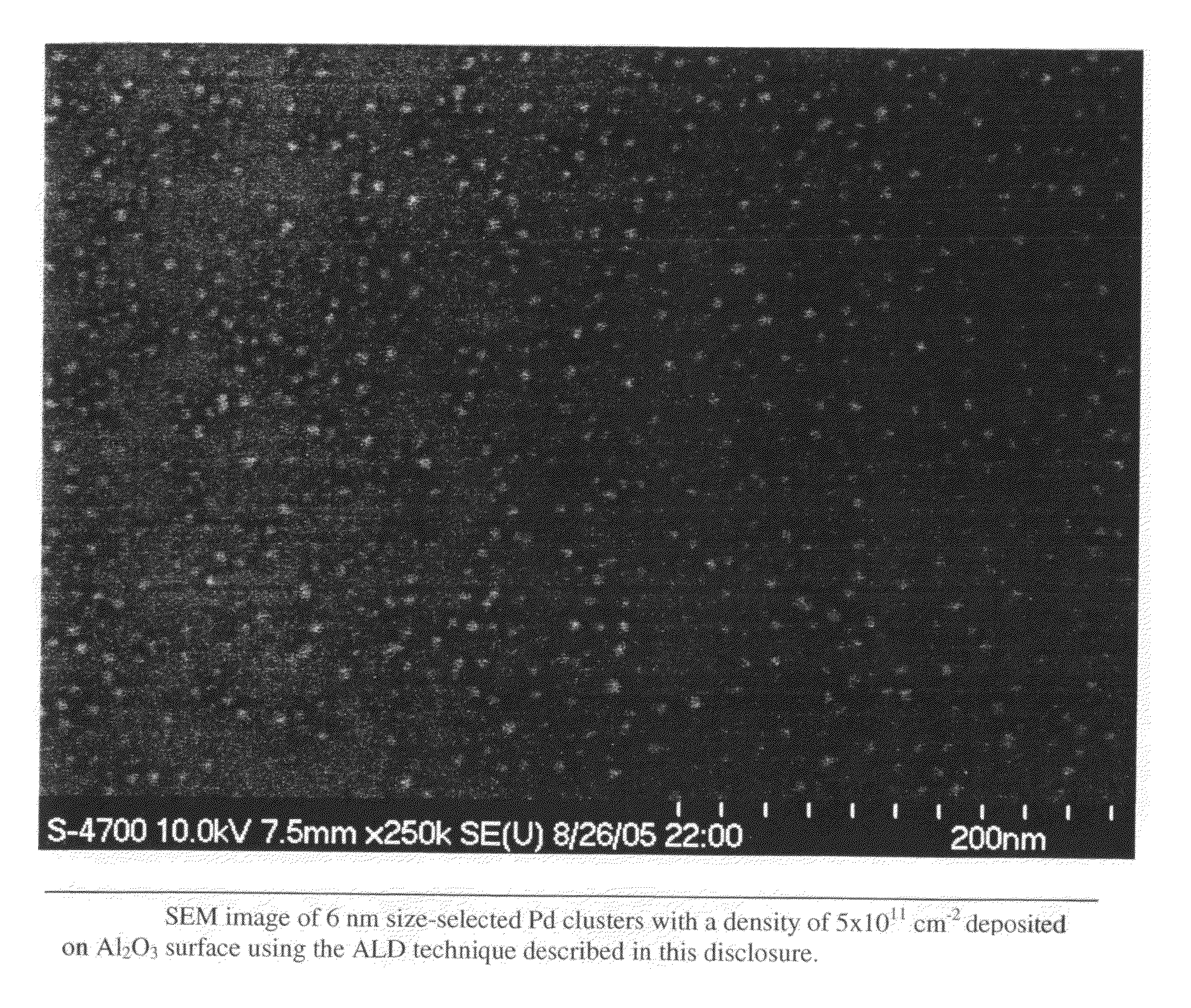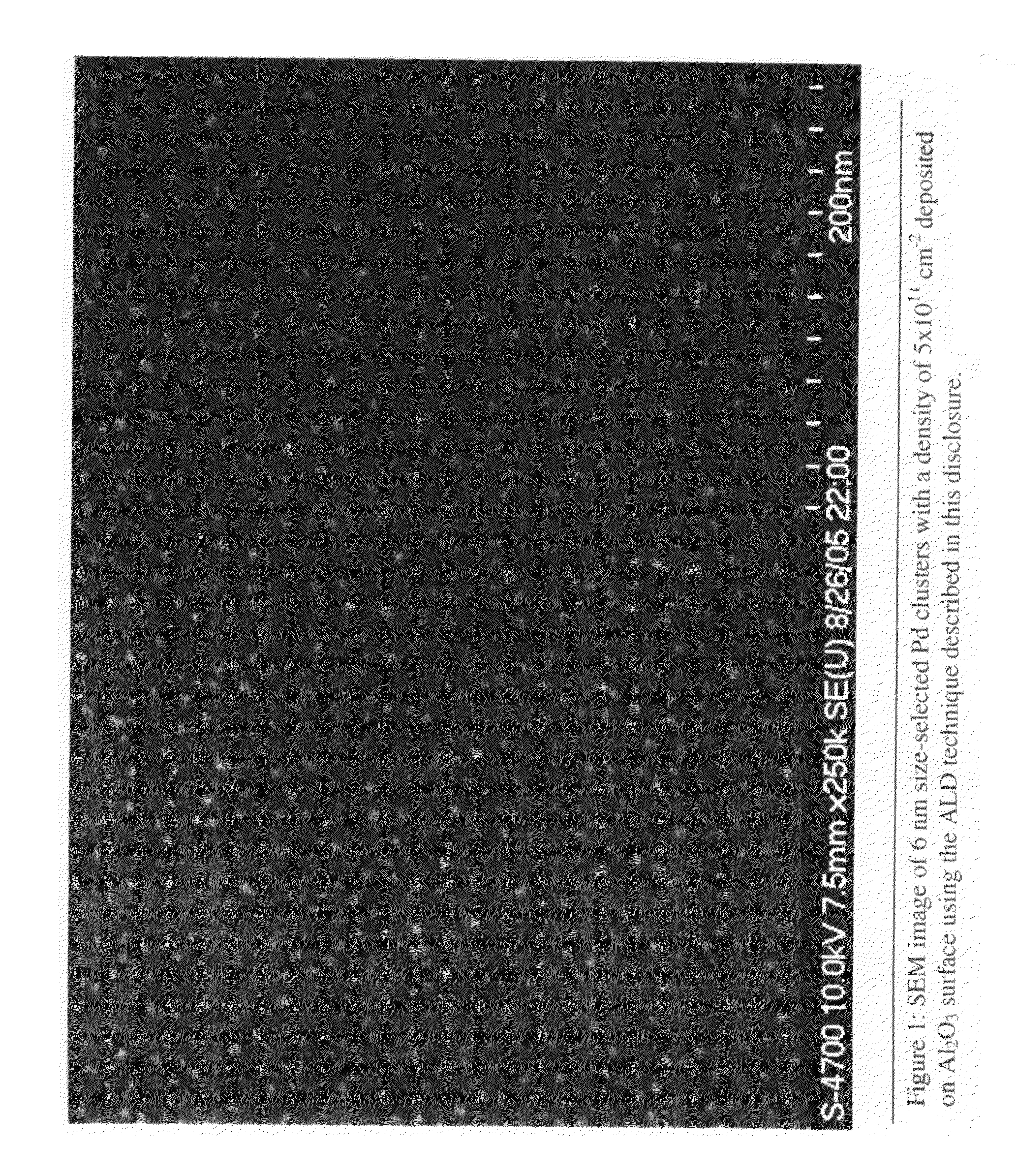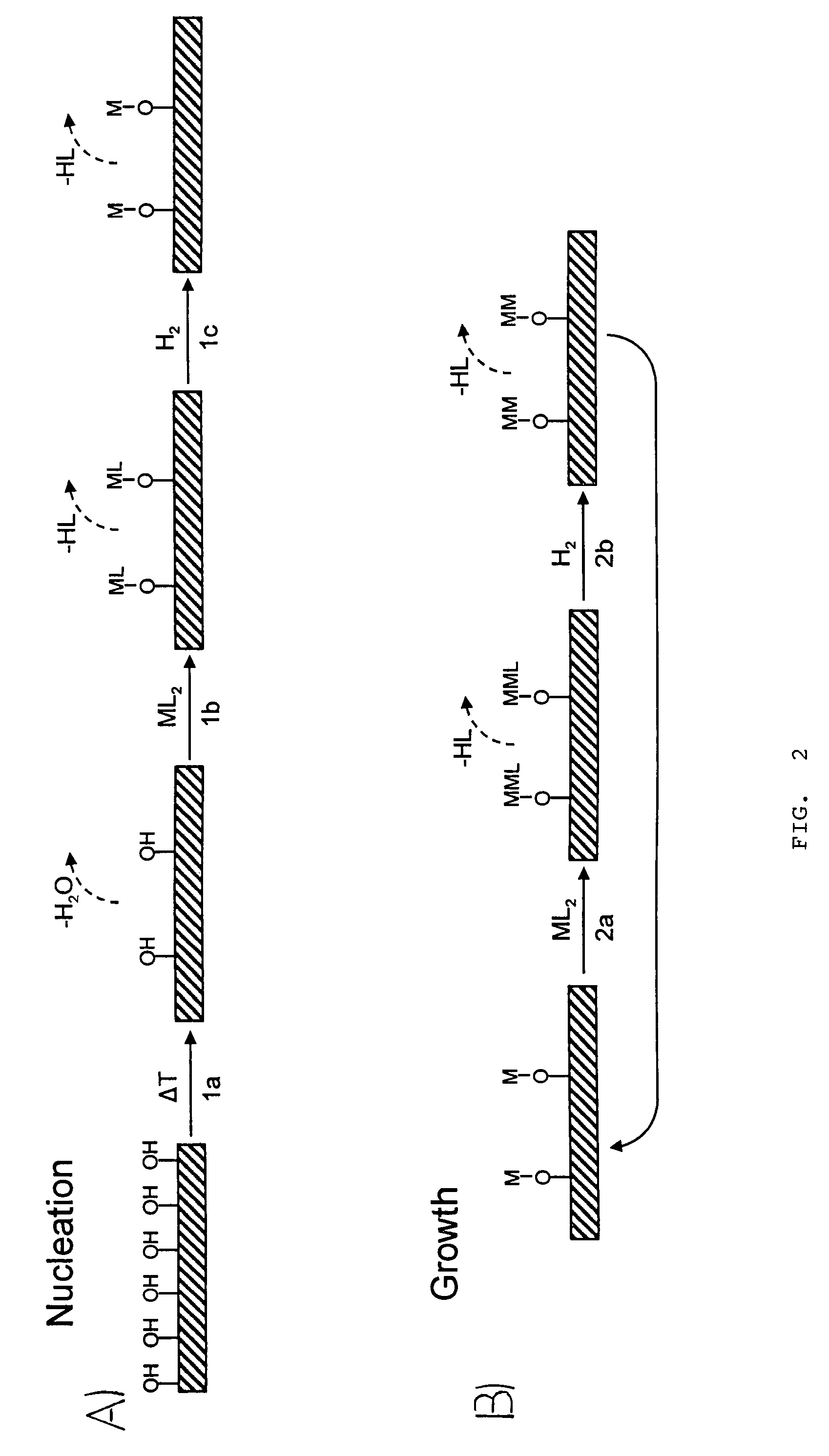Method of preparing size-selected metal clusters
a metal cluster and size-selected technology, applied in metal/metal-oxide/metal-hydroxide catalysts, physical/chemical process catalysts, other chemical processes, etc., can solve the problems of difficult preparation of metal clusters, especially difficult, and both of the aforementioned techniques are only viable for deposition on flat (i.e., nonporous) surfaces, so as to facilitate the production of heterogeneous catalysts
- Summary
- Abstract
- Description
- Claims
- Application Information
AI Technical Summary
Benefits of technology
Problems solved by technology
Method used
Image
Examples
example 1
Pd Cluster Density Detail
[0059]The influence of the Pd ALD timing sequence on Pd cluster and film growth rate was examined by first depositing a 10 nm Al2O3 ALD buffer layer on the QCM and subsequently depositing Pd using Pd(hfac)2 / formalin with the different timing sequences given in FIG. 5. For these experiments, the timing sequence was adjusted to be 1t1-1t2-1t3-1t4 seconds following the deposition of 1 Pd monolayer. The timing sequence corresponds to first an exposure time (t1) for the metal containing vapor, second a purge time (t2) whereby the metal vapor is purged or otherwise evacuated from the reaction chamber, third an exposure time (t3) for the reducing agent, and fourth a time (t4) for purging the reducing agent from the reaction chamber. The QCM measurements in FIG. 4 assume a Pd density of 12.0 g / cm3. FIG. 5 reveals that using the 1-1-1-1 s timing sequence, the Pd growth rate is lower initially on the Al2O3 surface and then gradually increases to reach the steady-state...
example 2
Pd Cluster Size Detail
[0061]The nucleation technique allows Pd to be deposited on these surfaces using atomic layer control after the deposition of a thin ALD Al2O3 seed layer. In addition, formalin allows Pd films to be deposited directly on other oxide surfaces without the need for an Al2O3 seed layer. H2 is effective for Pd ALD once the Pd film has nucleated using formalin. One embodiment of the method comprises first nucleating the Pd growth using formalin, and then to switch to H2 for the remaining film growth.
[0062]Following the nucleation studies, the QCM was used to determine the optimum timing sequence for Pd ALD. As shown in FIG. 6a, the Pd ALD growth rate increases rapidly with Pd(hfac)2 exposure time and reaches 0.21 Å / cycle at t1=1 s. The Pd growth rate continues to increase slowly for t1>1 s and achieves 0.28 Å / cycle at t1=5 s. This gradual saturation reflects a decreasing Pd(hfac)2 reactivity with increasing surface coverage. In contrast to the Pd(hfac)2 results, the ...
PUM
| Property | Measurement | Unit |
|---|---|---|
| diameter | aaaaa | aaaaa |
| diameter | aaaaa | aaaaa |
| diameter | aaaaa | aaaaa |
Abstract
Description
Claims
Application Information
 Login to View More
Login to View More - R&D
- Intellectual Property
- Life Sciences
- Materials
- Tech Scout
- Unparalleled Data Quality
- Higher Quality Content
- 60% Fewer Hallucinations
Browse by: Latest US Patents, China's latest patents, Technical Efficacy Thesaurus, Application Domain, Technology Topic, Popular Technical Reports.
© 2025 PatSnap. All rights reserved.Legal|Privacy policy|Modern Slavery Act Transparency Statement|Sitemap|About US| Contact US: help@patsnap.com



